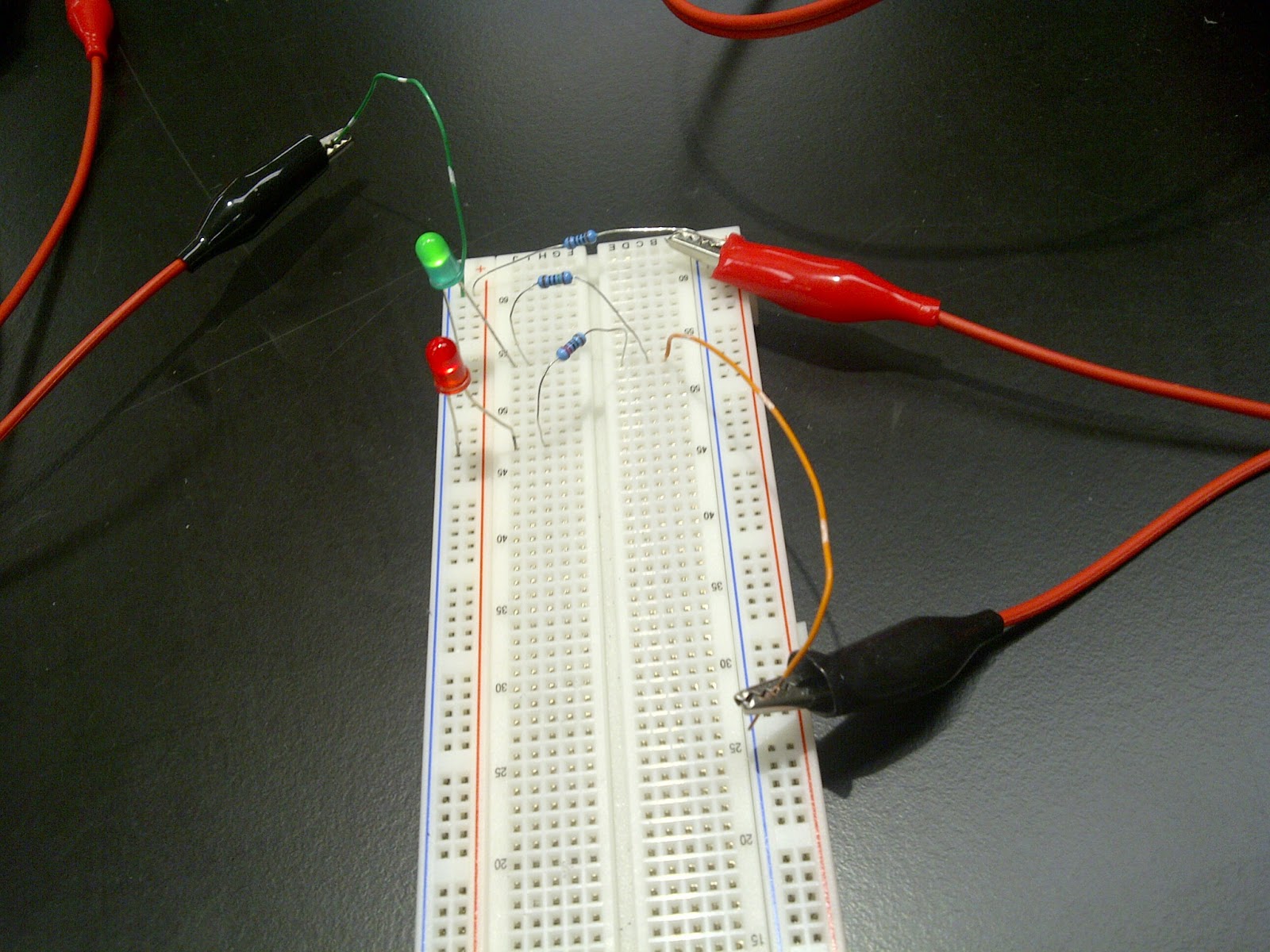Procedure:
From the given schematic, we will represent the 5V Yellow (LED1) and 2V Green (LED2) LEDs as resistors.
R_LED1 = 219.78 Ω
R_LED2 = 100 Ω
Once we solve for R_1 and R_2 using V = iR, the power is calculated to ensure the resistors are not destroyed.
R_1 = (9-5)/22.75 V/mA = 175.8 Ω
R_2 = (9-2)/20 V/mA = 350 Ω
P_R1 = (9-5)*22.75 V*mA = 0.09098 W
P_R2 = (9-2)*20 V*mA = 0.14 W
Since resistors come in discrete values, and assuming our access to only 100, 150, 220, 330, or 470 Ω, we choose higher resistors so the LEDs would still work with out burning out at a lower voltage.
Color
Code
|
Nominal
Value
|
Measured
Value
|
Wattage
|
|||
R
|
R
|
Blk
|
Blk
|
220 Ω
|
217 Ω
|
0.125 W
|
Y
|
Pur
|
Blk
|
Blk
|
470 Ω
|
465 Ω
|
0.125 W
|
To build the resistor, we connected two resistors in parallel.
From there, they would connect to the LEDs in Series.
Turning the power supply to 9V and turning it on resulted in the LEDs working. If they were not working, the LEDs were switched to reverse their polarity.
The experiment has three configurations:
1. Both LEDs are connected.
2. The Green LED is removed.
3. The Yellow LED is removed.
Config
|
I_LED1
|
V_LED1
|
I_LED2
|
V_LED2
|
I_Supply
|
1
|
13.34
mA
|
6.27
V
|
15.05
mA
|
2.14
V
|
28.7
mA
|
2
|
13.38
mA
|
6.29
V
|
X
|
X
|
13.38
mA
|
3
|
X
|
X
|
15.07
mA
|
2.14
V
|
15.07
mA
|
Bonus:
Both LEDs must be in the circuit because if one LED is removed, the current will be too high resulting in the other LED burning out.
a. A 9V Alkaline battery has 0.2A-hr of usefulness.
I_Supply = 28.7 mA
t = 0.2/I_Supply = 6.97 hr
b. Percent Error
LED1 (Yellow) = 41.36%
LED2 (Green) = 24.75%
Resistors are limited to specific values in real life; thus, resistors used will be different than theoretical values on paper due to factors such as costs per resistor.
c. P_out = (13.34 mA)*(6.27 V) + (15.05 mA)*(2.14 V) = 115.8 mW
P_in = (28.7 mA)*(9.26 V) = 265.76 mW
Efficiency = P_out/P_in*100% = 30.3%
d. The efficiency would go up because less power will be dissipated through the biasing resistors.
For the best efficiency, it would be to set the power supply to 5V. Instead of using 2 Biasing resistors, only one will be used therefore the LEDs will have more power resulting in a better efficiency.






No comments:
Post a Comment